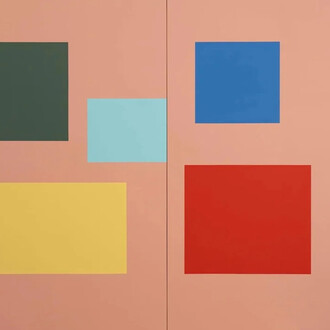Rick Wester Fine Art is pleased to announce Other News, an exhibition of works in varying mediums by three women inspired by disparate sources but who share a common thread in responding to a world of unconfined violence and its human toll. Whether it is the unseen tragedies of international terrorism, a mother’s reaction to seemingly endless and sanctified gun violence or the way displacement and diasporas affect the most innocent populations, these artists share their private concerns and connections in the subject matter directly from personal experience. They are adamant in their insistent expression. Other News is an adjunct exhibition to DeLIMITations, a collaborative project by the Mexican conceptual sculptor Marcos Ramírez ERRE and the American photographic artist David Taylor which surveys the original 1821 Mexico border with the U.S.
Justyna Badach’s images convey brutal and rampant acts of violence and terror as filtered through the lens of internet-based recruitment videos uploaded by ISIS, but now removed from YouTube. A fourth-generation refugee, her family was granted asylum in the United States in 1980 but she “was classified as ‘stateless’ until 1998” while gaining knowledge and familiarity with her adopted country through television and popular culture. The work exhibited comes from her continuous project, Land of Epic Battles, a comingled grouping of images printed in dichromate casein using gunpowder as pigment. The effect is historically ironic, harkening back to the overtly romanticism of the late 19th and early 20th century Pictorialist movement in photography that presented a peaceful, soft-focus world of leisure, while simultaneously referring to contemporary cultural appropriation. The pairing of screen grabs of rocket launches, bombed out buildings and barren landscapes with text from the videos’ subtitles create a discourse of implied meanings, giving form to the changing nature of contemporary warfare, with its increasing emphasis on remote technology, hidden enemies, and use of digital media as a weapon.
Like a pedal tone, or a mantra, the full title of Ileana Doble Hernandez’s video work Your Fucking Right is My Biggest Fear, repeats over and over, playing against itself as her voice moves through emotions ranging from insistence to anger; to dismay to sorrow; to quiet indignation, all fueled by the experience of living with a preponderance of gun violence on the Mexican border where she grew up and still has family on both sides. The only statement in this intense, Minimalist poem, it is the voice of a mother, a witness, and an artist who refuses to accept the status quo. Hernandez, a Mexican activist artist reveals another side to the gun rights debate that is often overlooked and not considered – that not of the victim or the gun owner but that of the affected observer. Her deft handling of the moving typography, manipulating the speed, size, orientation and color of the type, mimics the intense modulation of emotion in her voice, as the reading of the text drives her voice to breaking, to tears. There is no turning away from the purity of her message, the plainness of her appeal.
Since 2011 Donna Ruff, a paper artist with a background in graphic design, has transformed the front pages of newspapers, including the London Independent, the Miami Herald but mostly The New York Times into reports of another nature. Moved by the migrant and refugee crisis in Europe, Ruff overlaid patterns created from Moorish designs over the newsprint, selectively cutting into the paper to reduce certain texts and images and to emphasize others. In so doing the paper becomes a record of not just today’s news but, by association, of centuries of cultural conflict and assimilation and banishment. Generally preferring the images to the text, the subjects that survive her editing are people, those innocent victims of forced migration, whose stories are being captured only now. Ruff, whose Jewish heritage is written in the tones of a diaspora, empathizes with those affected by the political, social and economic upheavals that drive them far from the homes they knew towards ones that remain unknown.
The works shown here differ from previous executions in The Migrant Series in that the three works on display are augmented by the application of gold leaf, adding a complex layer of reference to the highly decorative motifs used in the Moors’ mosques and architecture and, in a self-referential nod to her reverence for newspapers, to illuminated manuscripts. But it is also a not so subtle reminder of how wealth and the pursuit of it can lead to massive disruptions of peoples.
















